Dec. 17th Event: The Latest on Omicron, Boosters, and Immunity
Kira Peikoff was the editor-in-chief of Leaps.org from 2017 to 2021. As a journalist, her work has appeared in The New York Times, Newsweek, Nautilus, Popular Mechanics, The New York Academy of Sciences, and other outlets. She is also the author of four suspense novels that explore controversial issues arising from scientific innovation: Living Proof, No Time to Die, Die Again Tomorrow, and Mother Knows Best. Peikoff holds a B.A. in Journalism from New York University and an M.S. in Bioethics from Columbia University. She lives in New Jersey with her husband and two young sons. Follow her on Twitter @KiraPeikoff.

The Omicron variant poses new uncertainty for the vaccines, which four leading experts will address during our virtual event on December 17th, 2021.
This virtual event will convene leading scientific and medical experts to discuss the most pressing questions around the new Omicron variant, including what we know so far about its ability to evade COVID-19 vaccines, the role of boosters in eliciting heightened immunity, and the science behind variants and vaccines. A public Q&A will follow the expert discussion.
EVENT INFORMATION:
Date: Friday Dec 17, 2021
2:00pm - 3:30pm EST
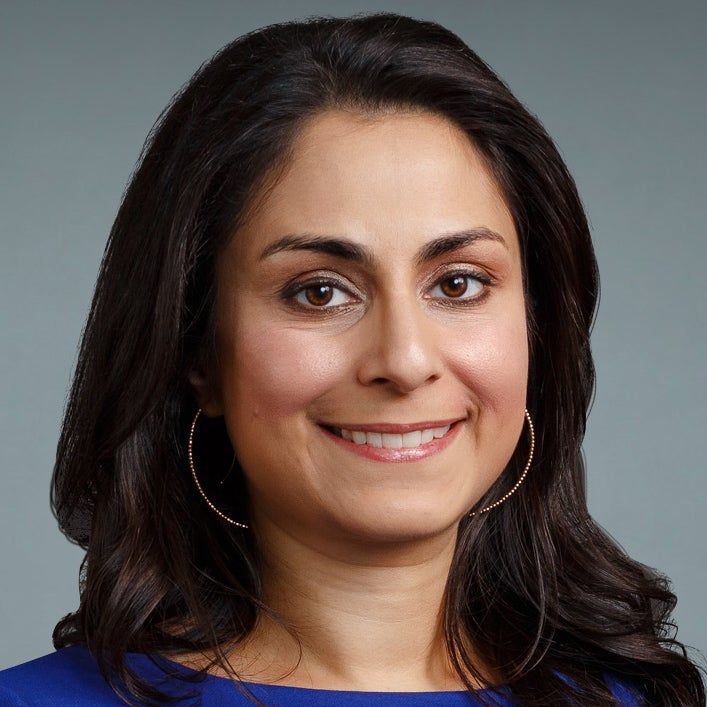
Dr. Céline Gounder, MD, ScM, is the CEO/President/Founder of Just Human Productions, a non-profit multimedia organization. She is also the host and producer of American Diagnosis, a podcast on health and social justice, and Epidemic, a podcast about infectious disease epidemics and pandemics. She served on the Biden-Harris Transition COVID-19 Advisory Board.
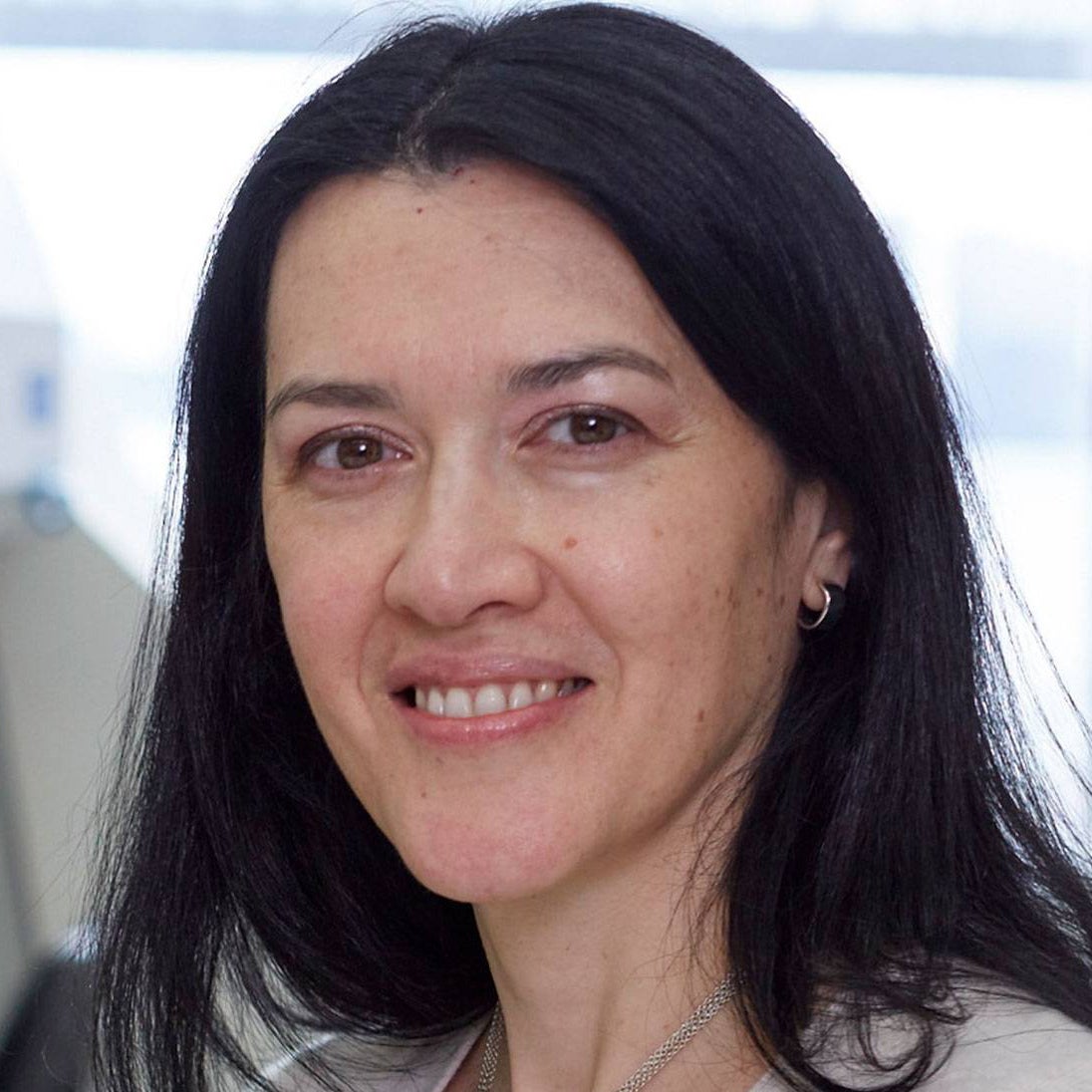 Dr. Theodora Hatziioannou, Ph.D., is a Research Associate Professor in the Laboratory of Retrovirology at The Rockefeller University. Her research includes identifying plasma samples from recovered COVID-19 patients that contain antibodies capable of neutralizing the SARS-CoV-2 coronavirus.
Dr. Theodora Hatziioannou, Ph.D., is a Research Associate Professor in the Laboratory of Retrovirology at The Rockefeller University. Her research includes identifying plasma samples from recovered COVID-19 patients that contain antibodies capable of neutralizing the SARS-CoV-2 coronavirus.
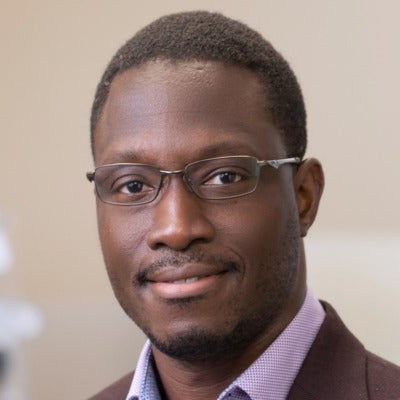
Dr. Onyema Ogbuagu, MBBCh, is an Associate Professor at Yale School of Medicine and an infectious disease specialist who treats COVID-19 patients and leads Yale’s clinical studies around COVID-19. He ran Yale’s trial of the Pfizer/BioNTech vaccine.
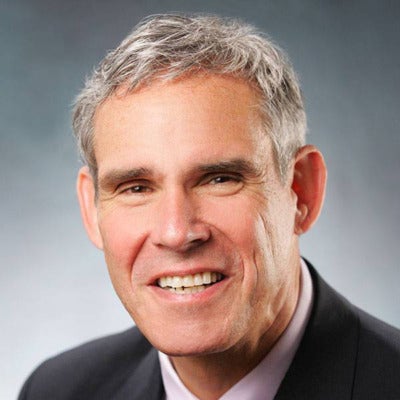
Dr. Eric Topol, M.D., is a cardiologist, scientist, professor of molecular medicine, and the director and founder of Scripps Research Translational Institute. He has led clinical trials in over 40 countries with over 200,000 patients and pioneered the development of many routinely used medications.
This event is the fourth of a four-part series co-hosted by Leaps.org, the Aspen Institute Science & Society Program, and the Sabin–Aspen Vaccine Science & Policy Group, with generous support from the Gordon and Betty Moore Foundation and the Howard Hughes Medical Institute.
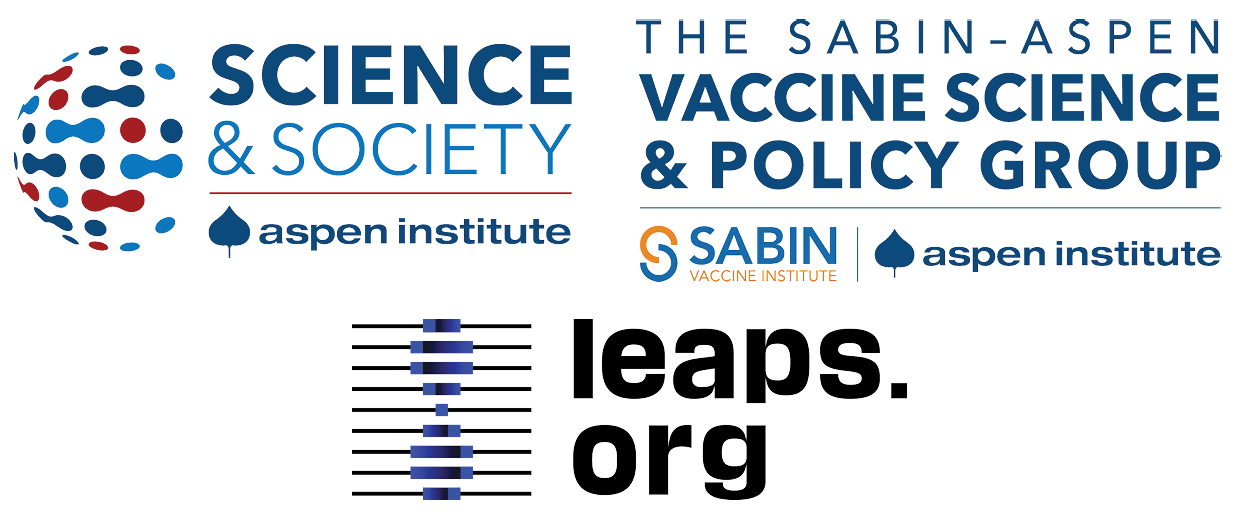
Kira Peikoff was the editor-in-chief of Leaps.org from 2017 to 2021. As a journalist, her work has appeared in The New York Times, Newsweek, Nautilus, Popular Mechanics, The New York Academy of Sciences, and other outlets. She is also the author of four suspense novels that explore controversial issues arising from scientific innovation: Living Proof, No Time to Die, Die Again Tomorrow, and Mother Knows Best. Peikoff holds a B.A. in Journalism from New York University and an M.S. in Bioethics from Columbia University. She lives in New Jersey with her husband and two young sons. Follow her on Twitter @KiraPeikoff.
The Case for an Outright Ban on Facial Recognition Technology
Some experts worry that facial recognition technology is a dangerous enough threat to our basic rights that it should be entirely banned from police and government use.
[Editor's Note: This essay is in response to our current Big Question, which we posed to experts with different perspectives: "Do you think the use of facial recognition technology by the police or government should be banned? If so, why? If not, what limits, if any, should be placed on its use?"]
In a surprise appearance at the tail end of Amazon's much-hyped annual product event last month, CEO Jeff Bezos casually told reporters that his company is writing its own facial recognition legislation.
The use of computer algorithms to analyze massive databases of footage and photographs could render human privacy extinct.
It seems that when you're the wealthiest human alive, there's nothing strange about your company––the largest in the world profiting from the spread of face surveillance technology––writing the rules that govern it.
But if lawmakers and advocates fall into Silicon Valley's trap of "regulating" facial recognition and other forms of invasive biometric surveillance, that's exactly what will happen.
Industry-friendly regulations won't fix the dangers inherent in widespread use of face scanning software, whether it's deployed by governments or for commercial purposes. The use of this technology in public places and for surveillance purposes should be banned outright, and its use by private companies and individuals should be severely restricted. As artificial intelligence expert Luke Stark wrote, it's dangerous enough that it should be outlawed for "almost all practical purposes."
Like biological or nuclear weapons, facial recognition poses such a profound threat to the future of humanity and our basic rights that any potential benefits are far outweighed by the inevitable harms.
We live in cities and towns with an exponentially growing number of always-on cameras, installed in everything from cars to children's toys to Amazon's police-friendly doorbells. The use of computer algorithms to analyze massive databases of footage and photographs could render human privacy extinct. It's a world where nearly everything we do, everywhere we go, everyone we associate with, and everything we buy — or look at and even think of buying — is recorded and can be tracked and analyzed at a mass scale for unimaginably awful purposes.
Biometric tracking enables the automated and pervasive monitoring of an entire population. There's ample evidence that this type of dragnet mass data collection and analysis is not useful for public safety, but it's perfect for oppression and social control.
Law enforcement defenders of facial recognition often state that the technology simply lets them do what they would be doing anyway: compare footage or photos against mug shots, drivers licenses, or other databases, but faster. And they're not wrong. But the speed and automation enabled by artificial intelligence-powered surveillance fundamentally changes the impact of that surveillance on our society. Being able to do something exponentially faster, and using significantly less human and financial resources, alters the nature of that thing. The Fourth Amendment becomes meaningless in a world where private companies record everything we do and provide governments with easy tools to request and analyze footage from a growing, privately owned, panopticon.
Tech giants like Microsoft and Amazon insist that facial recognition will be a lucrative boon for humanity, as long as there are proper safeguards in place. This disingenuous call for regulation is straight out of the same lobbying playbook that telecom companies have used to attack net neutrality and Silicon Valley has used to scuttle meaningful data privacy legislation. Companies are calling for regulation because they want their corporate lawyers and lobbyists to help write the rules of the road, to ensure those rules are friendly to their business models. They're trying to skip the debate about what role, if any, technology this uniquely dangerous should play in a free and open society. They want to rush ahead to the discussion about how we roll it out.
We need spaces that are free from government and societal intrusion in order to advance as a civilization.
Facial recognition is spreading very quickly. But backlash is growing too. Several cities have already banned government entities, including police and schools, from using biometric surveillance. Others have local ordinances in the works, and there's state legislation brewing in Michigan, Massachusetts, Utah, and California. Meanwhile, there is growing bipartisan agreement in U.S. Congress to rein in government use of facial recognition. We've also seen significant backlash to facial recognition growing in the U.K., within the European Parliament, and in Sweden, which recently banned its use in schools following a fine under the General Data Protection Regulation (GDPR).
At least two frontrunners in the 2020 presidential campaign have backed a ban on law enforcement use of facial recognition. Many of the largest music festivals in the world responded to Fight for the Future's campaign and committed to not use facial recognition technology on music fans.
There has been widespread reporting on the fact that existing facial recognition algorithms exhibit systemic racial and gender bias, and are more likely to misidentify people with darker skin, or who are not perceived by a computer to be a white man. Critics are right to highlight this algorithmic bias. Facial recognition is being used by law enforcement in cities like Detroit right now, and the racial bias baked into that software is doing harm. It's exacerbating existing forms of racial profiling and discrimination in everything from public housing to the criminal justice system.
But the companies that make facial recognition assure us this bias is a bug, not a feature, and that they can fix it. And they might be right. Face scanning algorithms for many purposes will improve over time. But facial recognition becoming more accurate doesn't make it less of a threat to human rights. This technology is dangerous when it's broken, but at a mass scale, it's even more dangerous when it works. And it will still disproportionately harm our society's most vulnerable members.
Persistent monitoring and policing of our behavior breeds conformity, benefits tyrants, and enriches elites.
We need spaces that are free from government and societal intrusion in order to advance as a civilization. If technology makes it so that laws can be enforced 100 percent of the time, there is no room to test whether those laws are just. If the U.S. government had ubiquitous facial recognition surveillance 50 years ago when homosexuality was still criminalized, would the LGBTQ rights movement ever have formed? In a world where private spaces don't exist, would people have felt safe enough to leave the closet and gather, build community, and form a movement? Freedom from surveillance is necessary for deviation from social norms as well as to dissent from authority, without which societal progress halts.
Persistent monitoring and policing of our behavior breeds conformity, benefits tyrants, and enriches elites. Drawing a line in the sand around tech-enhanced surveillance is the fundamental fight of this generation. Lining up to get our faces scanned to participate in society doesn't just threaten our privacy, it threatens our humanity, and our ability to be ourselves.
[Editor's Note: Read the opposite perspective here.]
Scientists Are Building an “AccuWeather” for Germs to Predict Your Risk of Getting the Flu
A future app may help you avoid getting the flu by informing you of your local risk on a given day.
Applied mathematician Sara del Valle works at the U.S.'s foremost nuclear weapons lab: Los Alamos. Once colloquially called Atomic City, it's a hidden place 45 minutes into the mountains northwest of Santa Fe. Here, engineers developed the first atomic bomb.
Like AccuWeather, an app for disease prediction could help people alter their behavior to live better lives.
Today, Los Alamos still a small science town, though no longer a secret, nor in the business of building new bombs. Instead, it's tasked with, among other things, keeping the stockpile of nuclear weapons safe and stable: not exploding when they're not supposed to (yes, please) and exploding if someone presses that red button (please, no).
Del Valle, though, doesn't work on any of that. Los Alamos is also interested in other kinds of booms—like the explosion of a contagious disease that could take down a city. Predicting (and, ideally, preventing) such epidemics is del Valle's passion. She hopes to develop an app that's like AccuWeather for germs: It would tell you your chance of getting the flu, or dengue or Zika, in your city on a given day. And like AccuWeather, it could help people alter their behavior to live better lives, whether that means staying home on a snowy morning or washing their hands on a sickness-heavy commute.

Sara del Valle of Los Alamos is working to predict and prevent epidemics using data and machine learning.
Since the beginning of del Valle's career, she's been driven by one thing: using data and predictions to help people behave practically around pathogens. As a kid, she'd always been good at math, but when she found out she could use it to capture the tentacular spread of disease, and not just manipulate abstractions, she was hooked.
When she made her way to Los Alamos, she started looking at what people were doing during outbreaks. Using social media like Twitter, Google search data, and Wikipedia, the team started to sift for trends. Were people talking about hygiene, like hand-washing? Or about being sick? Were they Googling information about mosquitoes? Searching Wikipedia for symptoms? And how did those things correlate with the spread of disease?
It was a new, faster way to think about how pathogens propagate in the real world. Usually, there's a 10- to 14-day lag in the U.S. between when doctors tap numbers into spreadsheets and when that information becomes public. By then, the world has moved on, and so has the disease—to other villages, other victims.
"We found there was a correlation between actual flu incidents in a community and the number of searches online and the number of tweets online," says del Valle. That was when she first let herself dream about a real-time forecast, not a 10-days-later backcast. Del Valle's group—computer scientists, mathematicians, statisticians, economists, public health professionals, epidemiologists, satellite analysis experts—has continued to work on the problem ever since their first Twitter parsing, in 2011.
They've had their share of outbreaks to track. Looking back at the 2009 swine flu pandemic, they saw people buying face masks and paying attention to the cleanliness of their hands. "People were talking about whether or not they needed to cancel their vacation," she says, and also whether pork products—which have nothing to do with swine flu—were safe to buy.
At the latest meeting with all the prediction groups, del Valle's flu models took first and second place.
They watched internet conversations during the measles outbreak in California. "There's a lot of online discussion about anti-vax sentiment, and people trying to convince people to vaccinate children and vice versa," she says.
Today, they work on predicting the spread of Zika, Chikungunya, and dengue fever, as well as the plain old flu. And according to the CDC, that latter effort is going well.
Since 2015, the CDC has run the Epidemic Prediction Initiative, a competition in which teams like de Valle's submit weekly predictions of how raging the flu will be in particular locations, along with other ailments occasionally. Michael Johannson is co-founder and leader of the program, which began with the Dengue Forecasting Project. Its goal, he says, was to predict when dengue cases would blow up, when previously an area just had a low-level baseline of sick people. "You'll get this massive epidemic where all of a sudden, instead of 3,000 to 4,000 cases, you have 20,000 cases," he says. "They kind of come out of nowhere."
But the "kind of" is key: The outbreaks surely come out of somewhere and, if scientists applied research and data the right way, they could forecast the upswing and perhaps dodge a bomb before it hit big-time. Questions about how big, when, and where are also key to the flu.
A big part of these projects is the CDC giving the right researchers access to the right information, and the structure to both forecast useful public-health outcomes and to compare how well the models are doing. The extra information has been great for the Los Alamos effort. "We don't have to call departments and beg for data," says del Valle.
When data isn't available, "proxies"—things like symptom searches, tweets about empty offices, satellite images showing a green, wet, mosquito-friendly landscape—are helpful: You don't have to rely on anyone's health department.
At the latest meeting with all the prediction groups, del Valle's flu models took first and second place. But del Valle wants more than weekly numbers on a government website; she wants that weather-app-inspired fortune-teller, incorporating the many diseases you could get today, standing right where you are. "That's our dream," she says.

This plot shows the the correlations between the online data stream, from Wikipedia, and various infectious diseases in different countries. The results of del Valle's predictive models are shown in brown, while the actual number of cases or illness rates are shown in blue.
(Courtesy del Valle)
The goal isn't to turn you into a germophobic agoraphobe. It's to make you more aware when you do go out. "If you know it's going to rain today, you're more likely to bring an umbrella," del Valle says. "When you go on vacation, you always look at the weather and make sure you bring the appropriate clothing. If you do the same thing for diseases, you think, 'There's Zika spreading in Sao Paulo, so maybe I should bring even more mosquito repellent and bring more long sleeves and pants.'"
They're not there yet (don't hold your breath, but do stop touching your mouth). She estimates it's at least a decade away, but advances in machine learning could accelerate that hypothetical timeline. "We're doing baby steps," says del Valle, starting with the flu in the U.S., dengue in Brazil, and other efforts in Colombia, Ecuador, and Canada. "Going from there to forecasting all diseases around the globe is a long way," she says.
But even AccuWeather started small: One man began predicting weather for a utility company, then helping ski resorts optimize their snowmaking. His influence snowballed, and now private forecasting apps, including AccuWeather's, populate phones across the planet. The company's progression hasn't been without controversy—privacy incursions, inaccuracy of long-term forecasts, fights with the government—but it has continued, for better and for worse.
Disease apps, perhaps spun out of a small, unlikely team at a nuclear-weapons lab, could grow and breed in a similar way. And both the controversies and public-health benefits that may someday spin out of them lie in the future, impossible to predict with certainty.

